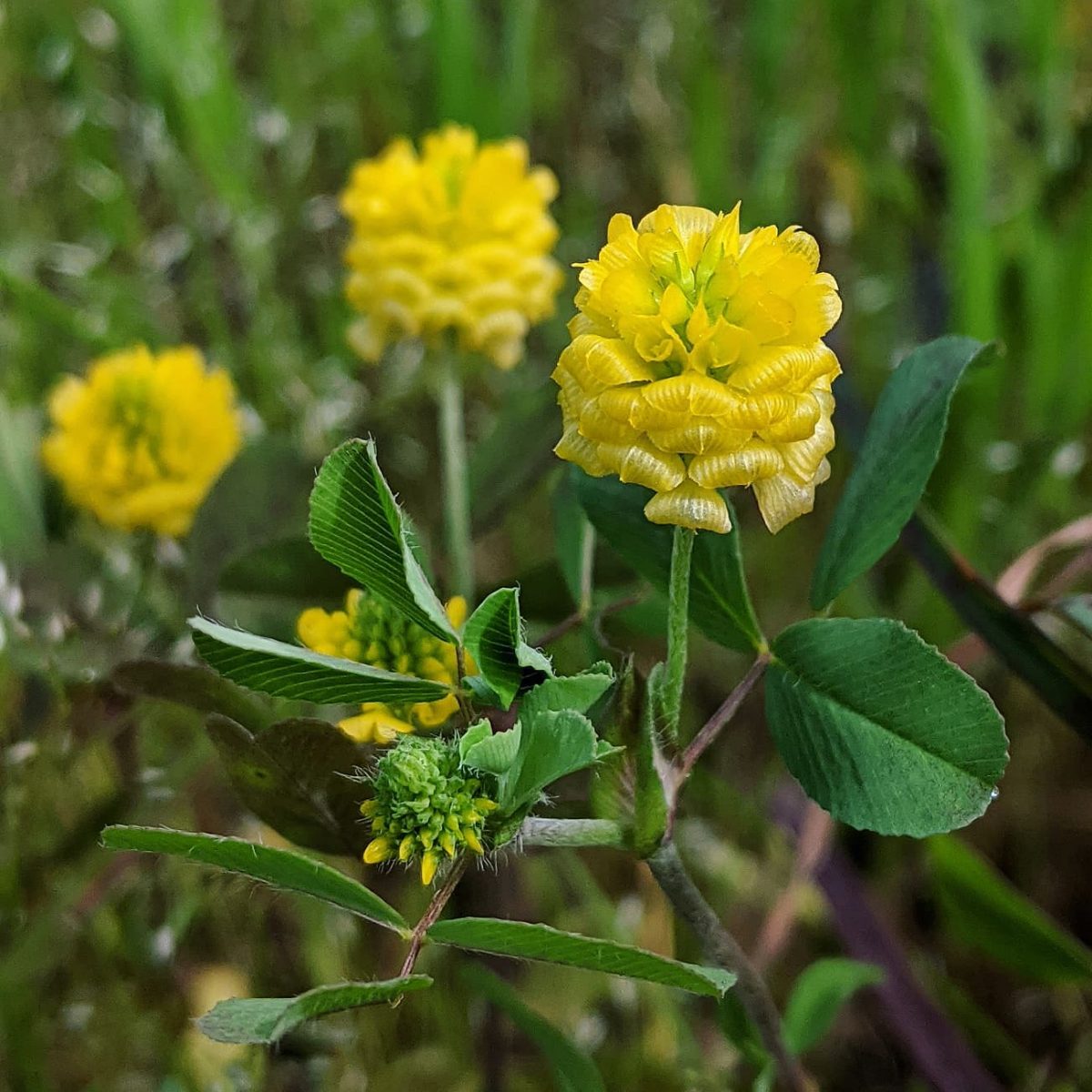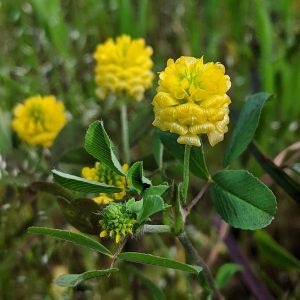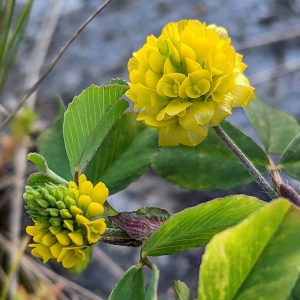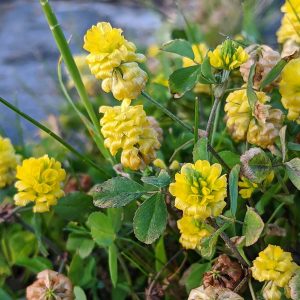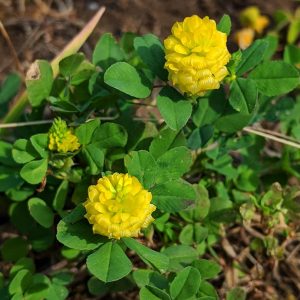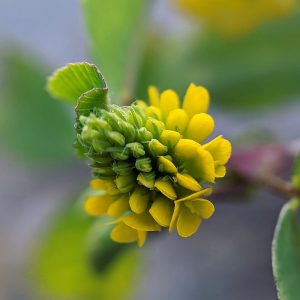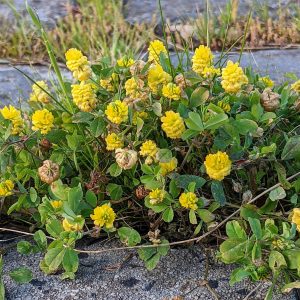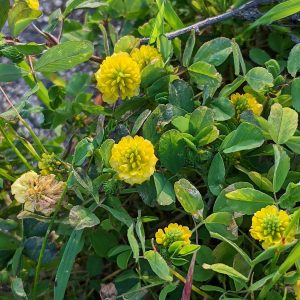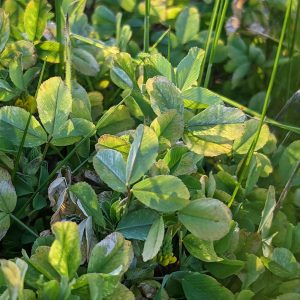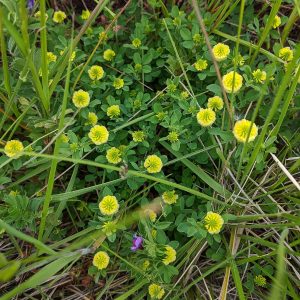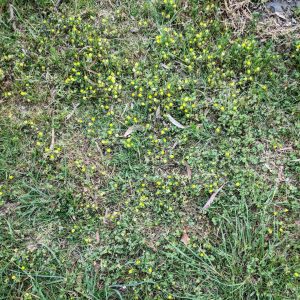Hop Clover (Trifolium campestre), another Eurasian legume introduced to Australia from the early years of the invasion in contaminated seed of other imported forage.
The species can be confused with Suckling Clover (Trifolium dubium) and with Black Medic (Medicago lupulina), but is easily recognised by its exceptional flower heads and the absence of the burr-shaped medic seed pods.
Considered inferior to premium European fodder and pasture lifters, Hop Clover arrived in Australia all the same and was often tolerated and damned with faint praise as an inoffensive volunteer in productive pastures, all the while becoming a nuisance weed in lawns and an environmental weed across Victoria.
‘One of the less useful of the clovers,’ opinions of Hop Clover’s value differed tremendously depending on where you were in the colonies and the soil you were attempting to raise stock on. In NSW, the plant was an unwelcome contaminant of Lucerne (alfalfa) and White Clover seed, and ‘looked upon rather as a nuisance than otherwise, likely to smother out the more tender herbage.’
von Mueller had however included the species in his pamphlets on Select Plants for Industrial Culture, calling it ‘of considerable value in sandy soil as a fodder herb [and] easily naturalised.’
In WA, Hop Clover’s tolerance for nutrient-poor sandy soils drew recurring praise from graziers, alongside lamentations of the failure of seed men to supply the species on a commercial basis. By 1909 the plant was also absurdly counted among a variety of creeping fodder plants ‘which most people consider as native [in WA] because they are so widely distributed’; one columnist encouraged visitors to Perth’s Royal Show that year to take note of the five clovers growing on the showgrounds (including this one) ‘and take every means possible for spreading them over his land.’
In Victoria, the species was similarly welcomed in Mallee pasturage, where ‘if these usually welcome volunteers are not already present, they should be introduced in small quantities.’
View Original Post on Instagram
Search for information about Trifolium campestre in the Flora of Victoria
View information and occurrences of Trifolium campestre on the Atlas of Living Australia
